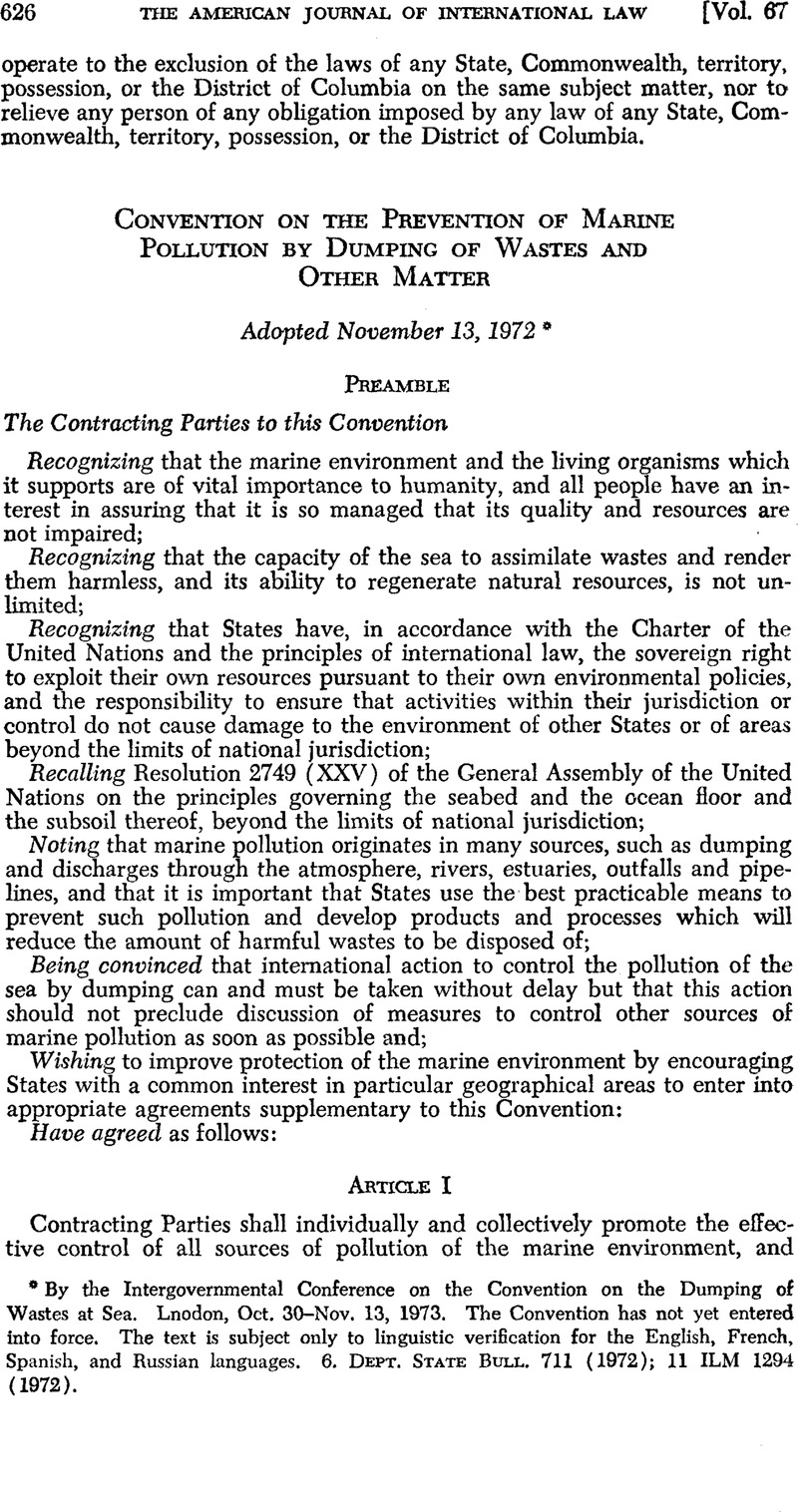No CrossRef data available.
Article contents
Convention on the Prevention of Marine Pollution by Dumping of Wastesand Other Matter
Published online by Cambridge University Press: 28 March 2017
Abstract

- Type
- Official Documents
- Information
- Copyright
- Copyright © American Society of International Law 1973
References
* By the Intergovernmental Conference on the Convention on the Dumping of Wastes at Sea. Lnodon, Oct. 30-Nov. 13, 1973. The Convention has not yet entered into force. The text is subject only to linguistic verification for the English, French, Spanish, and Russian languages. 6. Dept. State Bull. 711 (1972); 11 ILM 1294 (1972).
1 The U.S. delegation submitted the following interpretive statement: “The United States understands that the word ‘emergency’ as used in Article V(2) refers to situations requiring action with a marked degree of urgency, but is not limited in its application to circumstances requiring immediate action.”
2 The U.S. delegation submitted the following interpretive statement: “With reference to Item 6 on Annex I, the United States wishes to note that thre is no internationally accepted definition of “high level radioactive wastes’. The United States defines high level radioactive wastes as aqueous wastes resulting from the operation of the first cycle solvent extraction system, or equivalent, and the concentrated wastes from subsequent extraction cycles, or equivalent, in a facility for reprocessing irradiated reactor fuels. Until an internationally accepted definition is negotiated under the auspices of the International Atomic Energy Agency, the United States plans to govern its activities on the basis of the definition stated herein.”
3 As a separate action, the London meeting adopted the following Technical Memorandum of Agreement of the Conference: “The Conference agreed, on the advice of the Technical Working Party, that for a period of five years from the date when the present Convention comes into effect, wastes containing small quantities of inorganic compounds of mercury and cadmium, solidified by integration into concrete, may be approximately classified as wastes containing these substances as trace contaminants as mentioned in paragraph 9 of Annex I to the Convention but in these circumstances such wastes may be dumpted only in depths of not less than 3500 meters in conditions which would cause no harm to the marine environment and its living resources. When the Convention comes into effect, this method of disposal, which will be used for not longer than five years, will be subject to the relevant provisions of Article XIV 4.”


